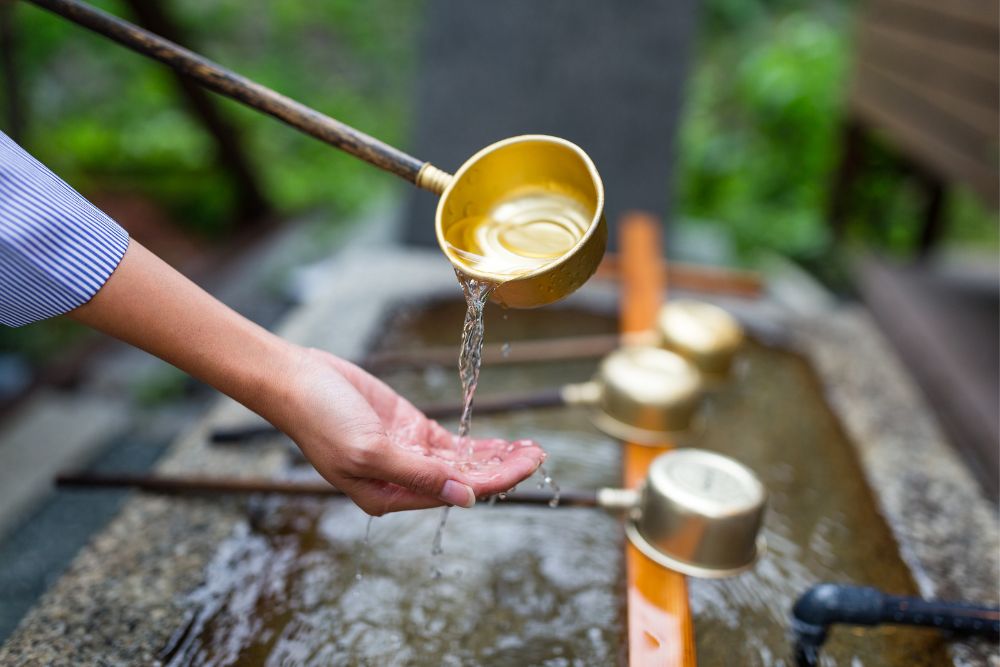Water is essential to human survival, and when faced with a dangerous or life-threatening situation, having access to clean water can mean the difference between life and death. In this article, we’ll explore the importance of proper water storage and purification in a survival situation.
As anyone who has ever gone camping knows all too well, packing enough safe drinking water for your excursion is an absolute must. But what happens if you find yourself stuck in some kind of emergency scenario? How do you ensure that there’s always a reliable source of drinking water available? That’s where proper water storage and purification techniques come into play, they are absolutely critical to success in any survival situation!
From understanding how much water you need per person per day, to learning about different methods of sanitation such as boiling or using chemicals – this article will cover everything you need to know about making sure that you’re never without clean drinking water during an emergency. Let’s get started!
Sources Of Water In A Survival Situation
Astonishingly, 70% of the Earth’s surface is covered by water. Water can be found in many forms such as rainwater harvesting, snow melt collection, pond water, river water, and groundwater. While each source provides a unique opportunity for an individual to collect and store it for their own use, it must first be located before any potential use.
Rainwater harvesting is a process where rainfall is collected from rooftops or other surfaces in order to provide potable drinking water. Snow melt collection involves collecting melted snow from glaciers or mountains that have been exposed to sunlight allowing them to thaw slowly over time. Pond water is typically contaminated with bacteria and parasites so must always be treated prior to consumption but can still offer necessary hydration during times when no other options are available.
River water may also contain bacteria but depending on the location could potentially provide safe drinking water without additional treatment steps being taken due to higher oxygen levels that help inhibit contamination growth rates. Groundwater offers another option which requires access to wells or boreholes while providing some assurance of quality if they were dug below certain depths within the ground strata layers.
While there are numerous sources of potentially usable liquids available in nature, it’s important not only to find one with suitable quality but also to ensure enough exists for future needs. This transition into the next section about collecting and storing this precious resource will allow us to evaluate how best to maximize our ability to acquire adequate supplies for whatever situation we may encounter
Collecting And Storing Water
Once a reliable water source has been identified in a survival situation, it is important to collect and store the water securely. Water catchment systems can be set up with collection containers or basins that are placed at an angle in order to capture rainwater. Alternatively, collecting vessels like buckets and jugs can be used to draw from natural bodies of water such as streams and lakes, while also being able to transport gathered water back to camp.
It is essential for those looking to survive outdoors over extended periods of time to take steps towards storing any collected water safely. The ideal method would involve transferring the liquid into a large container such as a barrel or cistern that can then be sealed off tightly against contamination from outside sources. In addition, having multiple smaller storage containers available prevents individuals from having all their eggs in one basket should something happen to the larger vessel. Water jugs made of plastic or metal are perfect for this purpose since they tend not to leak and have handles so they are easily transportated when full.
With adequate storage measures taken care of, attention must now turn towards purifying any collected water before use, both for drinking purposes and sanitary hygiene. By following simple techniques, contaminated liquids can quickly become safe enough for consumption without worrying about potential health risks associated with consuming unclean substances.
Techniques For Purifying Water
Water purification is an essential aspect of a survival situation, as it allows individuals to access clean water and reduce their risk of contamination. There are several different techniques available for purifying water, including decontamination methods such as boiling, chemical treatments like chlorine drops or iodine tablets, and physical filtration systems that remove debris from the water.
Boiling is one of the simplest and most effective ways for treating drinking water in a wilderness environment. Boiling any suspect water not only removes bacteria and other contaminants but also helps make the water taste better by removing unpleasant odors. It’s important to remember that boiling alone may not be enough to fully disinfect the water; adding chemicals like bleach can help ensure complete decontamination.
Filtration systems provide another way to effectively treat contaminated drinking water. These systems use filters made out of activated charcoal or ceramic material to trap particles such as dirt, sand, and sediment while allowing clear liquid to pass through. They’re relatively lightweight and easy to transport, making them ideal for situations where you need access to potable water quickly.
When dealing with potentially contaminated sources of drinking water, it’s crucial to take measures that will protect yourself against potential health risks associated with consuming unclean liquids. Utilizing proper purification techniques is critical in ensuring safe consumption of all types of fluids regardless of source. To this end, implementing appropriate strategies when preparing or filtering your own supply can go a long way towards avoiding possible illnesses caused by microbial agents present in untreated waters. Transitioning into the next section about contamination risks and solutions provides further insight on how best to accomplish these goals safely and efficiently during any type of outdoor excursion, regardless of duration.
Contamination Risks And Solutions
It is important to be aware of the various risks associated with water contamination. Improperly stored or untreated water can cause serious illness due to waterborne pathogens, chemical pollutants, and other contaminants. Therefore, it is essential to develop solution strategies that will help reduce these risks in a survival situation.
When faced with contaminated water sources, boiling water for at least one minute is an effective way to kill most bacteria and viruses. This technique may not remove all chemical pollutants from the water but it can effectively eliminate many potentially harmful organisms. Additionally, filtering out sediment before boiling further reduces the chances of ingesting particles that contain bacteria or viruses.
Another option for purifying questionable drinking water involves using chlorine-based products such as iodine tablets or bleach drops. These are relatively inexpensive solutions and have been proven effective against certain microorganisms like cryptosporidium and giardia lamblia; however, they do not address chemical pollution issues such as heavy metals or petroleum-based toxins.
Using a combination of filtration methods along with either boiling or chemical treatment ensures the removal of both microbial agents and hazardous chemicals from drinking supplies in a survival scenario. It also provides peace of mind knowing that any potential health risks have been greatly reduced when stocking up on safe drinking water resources in preparation for difficult times ahead.
With this knowledge comes the understanding of just how critical proper storage and purification techniques are when it comes to having access to clean drinking water during emergency situations.
Benefits Of Proper Water Storage And Purification
It is estimated that the average human can survive up to three weeks without food, but they can only last three days without water. Properly storing and purifying water in a survival situation is therefore essential for staying alive. There are various methods of doing so, including using water storage containers, water purification tablets, boiling water method, or purchasing a robust water filter system.
Water storage containers are designed to store large quantities of freshwater safely over long periods of time. Such containers come with airtight lids that prevent any contamination from outside sources such as dust particles or insects. They also require minimal maintenance compared to other storage options like barrels and tanks. Furthermore, these containers are lightweight and easily portable so you can take them on your journey if necessary.
When it comes to purifying drinking water, there are several different methods available, such as using purification tablets or chemical treatments like chlorine dioxide powder or iodine drops. Boiling is another popular option since it kills most microorganisms present in the water effectively while making it safe to drink.
Finally, investing in a good quality filter system will ensure that all impurities and contaminants have been removed before consumption. It’s important to note though that not all filters offer the same level of protection against pathogens, so research carefully before buying one!
With proper care and attention given towards storing and purifying drinking water correctly, an individual’s chances of surviving their ordeal will be greatly increased. With this knowledge at hand, anyone faced with a similar situation should feel more confident about keeping themselves hydrated and healthy until help arrives.
In Conclusion
Proper water storage and purification is an essential part of any survival situation. It’s important to understand the different sources of water available, as well as the techniques for collecting and storing it safely. Additionally, having knowledge about the various methods for purifying contaminated water can help protect our health from potential bacteria or other contaminants that may be present in natural sources.
With this information in hand, we’ll be better prepared should a disaster occur, giving us peace of mind knowing that we’re able to take care of ourselves and stay hydrated even if there isn’t access to clean tap water. Furthermore, when done correctly, these practices will ensure that our drinking water remains uncontaminated and safe to drink – something that could mean the difference between life or death in extreme circumstances!
So don’t forget: learning how to store and purify your own source of water is not only necessary but also invaluable in any survival situation. Don’t let yourself become unprepared by neglecting this critical step, you never know what might happen next!

